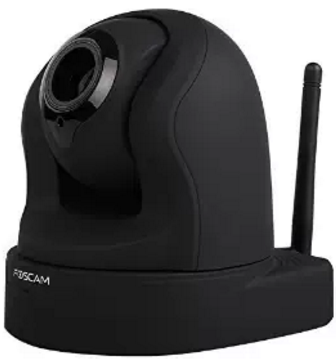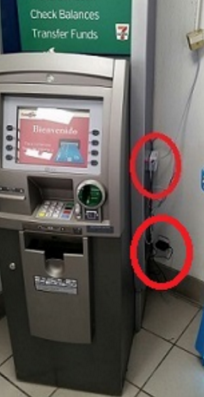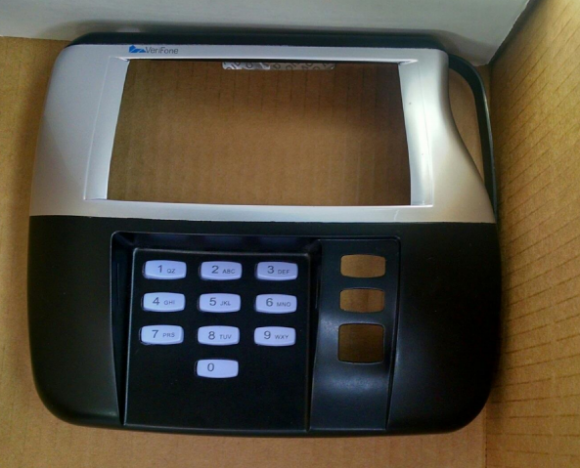Imagine buying an internet-enabled surveillance camera, network attached storage device, or home automation gizmo, only to find that it secretly and constantly phones home to a vast peer-to-peer (P2P) network run by the Chinese manufacturer of the hardware. Now imagine that the geek gear you bought doesn’t actually let you block this P2P communication without some serious networking expertise or hardware surgery that few users would attempt.

The FI9286P, a Foscam camera that includes P2P communication by default.
This is the nightmare “Internet of Things” (IoT) scenario for any system administrator: The IP cameras that you bought to secure your physical space suddenly turn into a vast cloud network designed to share your pictures and videos far and wide. The best part? It’s all plug-and-play, no configuration necessary!
I first became aware of this bizarre experiment in how not to do IoT last week when a reader sent a link to a lengthy discussion thread on the support forum for Foscam, a Chinese firm that makes and sells security cameras. The thread was started by a Foscam user who noticed his IP camera was noisily and incessantly calling out to more than a dozen online hosts in almost as many countries.
Turns out, this Focscam camera was one of several newer models the company makes that comes with peer-to-peer networking capabilities baked in. This fact is not exactly spelled out for the user (although some of the models listed do say “P2P” in the product name, others do not).
But the bigger issue with these P2P -based cameras is that while the user interface for the camera has a setting to disable P2P traffic (it is enabled by default), Foscam admits that disabling the P2P option doesn’t actually do anything to stop the device from seeking out other P2P hosts online (see screenshot below).
This is a concern because the P2P function built into Foscam P2P cameras is designed to punch through firewalls and can’t be switched off without applying a firmware update plus an additional patch that the company only released after repeated pleas from users on its support forum.

Yeah, this setting doesn’t work. P2P is still enabled even after you uncheck the box.
One of the many hosts that Foscam users reported seeing in their firewall logs was iotcplatform.com, a domain registered to Chinese communications firm ThroughTek Co., Ltd. Turns out, this domain has shown up in firewall logs for a number of other curious tinkerers who cared to take a closer look at what their network attached storage and home automation toys were doing on their network.
In January 2015, a contributing writer for the threat-tracking SANS Internet Storm Center wrote in IoT: The Rise of the Machines that he found the same iotcplatform.com domain called out in network traffic generated by a Maginon SmartPlug he’d purchased (smart plugs are power receptacles into which you plug lights and other appliances you may wish to control remotely).
What is the IOTC Plaform? According to ThroughTek, it’s a service developed to establish P2P communications between devices.
“I read the documentation provided with the device as well as all the website pages and there is no mention of this service,” wrote Xavier Mertens, an incident handler and blogger for SANS. “Manufacturers should include some technical documentation about the network requirements (ex: to download firmware updates).”
In another instance from May 2015, this blogger noted similar communications traffic emanating from a digital video recorder (DVR) device that’s sold in tandem with Internet-enabled surveillance cameras made by a company called Swann.
Likewise, postings from Dec. 2014 on the QNAP network attached storage (NAS) user forum indicate that some QNAP customers discovered mysterious traffic to iotcplatform.com and other Internet address requests that also were found in the Swann and Smart Plug traffic.
What do all of these things have in common? A visit to ThroughTek’s Web lists several “case studies” for its products, including Swann, QNAP and a home automation company based in Taiwan called AboCom.
ThroughTek did not respond to requests for comment. A ThroughTek press release from October 2015 announced that the company’s P2P network — which it calls the Kalay Network — had grown to support more than seven million connected devices and 100 million “IoT connections.”
I contacted Foscam to better understand the company’s relationship to ThroughTek, and to learn just how many Foscam devices now ship with ThroughTek’s built-in, always-on P2P technology. Foscam declined to say how many different models bundled the P2P technology, but it’s at least a dozen by my count of the models mentioned in the Foscam user manual and discussion thread. Continue reading →
 Stu Sjouwerman, chief executive at security awareness training company KnowBe4, told KrebsOnSecurity that earlier this week his firm’s controller received an email designed to look like it was sent by Sjouwerman requesting a copy of all employee W-2 forms for this year (full disclosure: KnowBe4 is an advertiser on this site). The email read:
Stu Sjouwerman, chief executive at security awareness training company KnowBe4, told KrebsOnSecurity that earlier this week his firm’s controller received an email designed to look like it was sent by Sjouwerman requesting a copy of all employee W-2 forms for this year (full disclosure: KnowBe4 is an advertiser on this site). The email read:








 Visa CEO Charles W. Scharf
Visa CEO Charles W. Scharf  KrebsOnSecurity reader Suzanne Perry, a self-professed “shopaholic” from Gilbert, Penn., said she recently received an email from Kohls.com stating that the email address on her account had been changed. Recognizing this as a common indicator of a compromised account, Perry said she immediately went to Kohls.com — which confirmed her fears that her password had been changed.
KrebsOnSecurity reader Suzanne Perry, a self-professed “shopaholic” from Gilbert, Penn., said she recently received an email from Kohls.com stating that the email address on her account had been changed. Recognizing this as a common indicator of a compromised account, Perry said she immediately went to Kohls.com — which confirmed her fears that her password had been changed. One
One 


